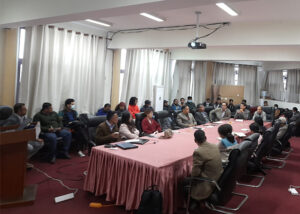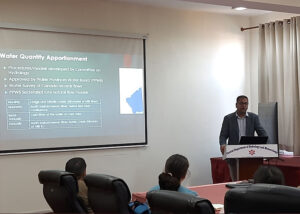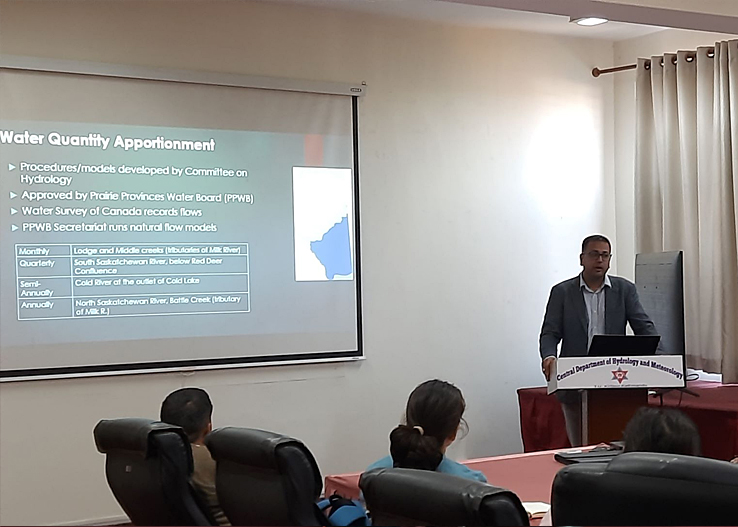The Small Earth Nepal (SEN) in collaboration with Center for Research of Environment, Energy and Water (CREEW), International Association of Hydrological Sciences (IAHS) – Nepal, Society of Hydrologist and Meteorologist (SOHAM) – Nepal, Central Department of Hydrology and Meteorology (CDHM), Tribhuvan University and United Nations Educational, Scientific and Cultural Organization (UNESCO) conducted the talk program by Dr. Prabin Rokaya to share some cases/studies on transboundary water management in Canadian waters. Dr. Rokaya is a research scientist currently serving as a Transboundary Water Quantity Specialist with the Government of Alberta and as an Adjunct Professor at the University of Saskatchewan. He has also led several community-based projects in climate change adaptation, poverty reduction, and flood risk management.
Professor Deepak Aryal (Head of the Department, CDHM, TU) chaired the program. Professor Hari Krishna Shrestha (Chairperson, SOHAM-Nepal) introduced the speaker. In the presentation, Dr. Rokaya shared the history of transboundary water agreements between Canada and the USA and his experiences in working for the current transboundary treaties. The first transboundary water management treaties were formulated in 1909 A.D. as a means to mitigate the conflicts between Alberta, Canada, and Montana, USA for the usage of The Milk River. Historically, the conflicts started In the late 1800s, settlers in Montana and Alberta were building competing canals to divert the waters of St. Mary and Milk Rivers for their own use. The framework and funding agreements for this treaty involved International Treaties and Interprovincial Agreements. The Master Appointment on Apportionment implemented by Prairie Provinces Water Board (PPWB) proposed a 50:50 share for the water quantity of the river which would be reviewed every 5 years. The agreements have evolved to now accommodate water quality along with the aquatic biology, indigenous community, and groundwater since the 2015- Alberta-NWT Treaty.
During the discussion phase, Dr. Rokaya explained that for the possibility of a 50:50 share in transboundary water management between Nepal and India adaptive measures could be used where the water is managed as the requirement for each nation. The thought of “Why should I share my water?” should be replaced with “ we should share our water.” During the discussion phase, Dr. Rokaya responded to a request by Ms. Sijal Pokhrel (National Science Officer, UNESCO) that Nepali students can also find such opportunities by linking with professors who carry out such works. Dr. Rabin Malla (Executive Director, CREEW) shared the importance of transboundary water management in his remarks. Dr. Dhiraj Pradhananga (Associate Professor at Tribhuvan University and President at SEN) recalled his meeting with Dr. Rokaya during the International Graduate Conference on Climate Change and People. He shared a collaboration opportunity for the prospective UNESCO Chair Program in Mountain Water Sustainability. Professor Rijan Bhakta Kayastha (National Correspondent, IAHS-Nepal), in his concluding remarks, informed about the International Conference on Mountain Hydrology and Cryosphere to be held in November 2023.






